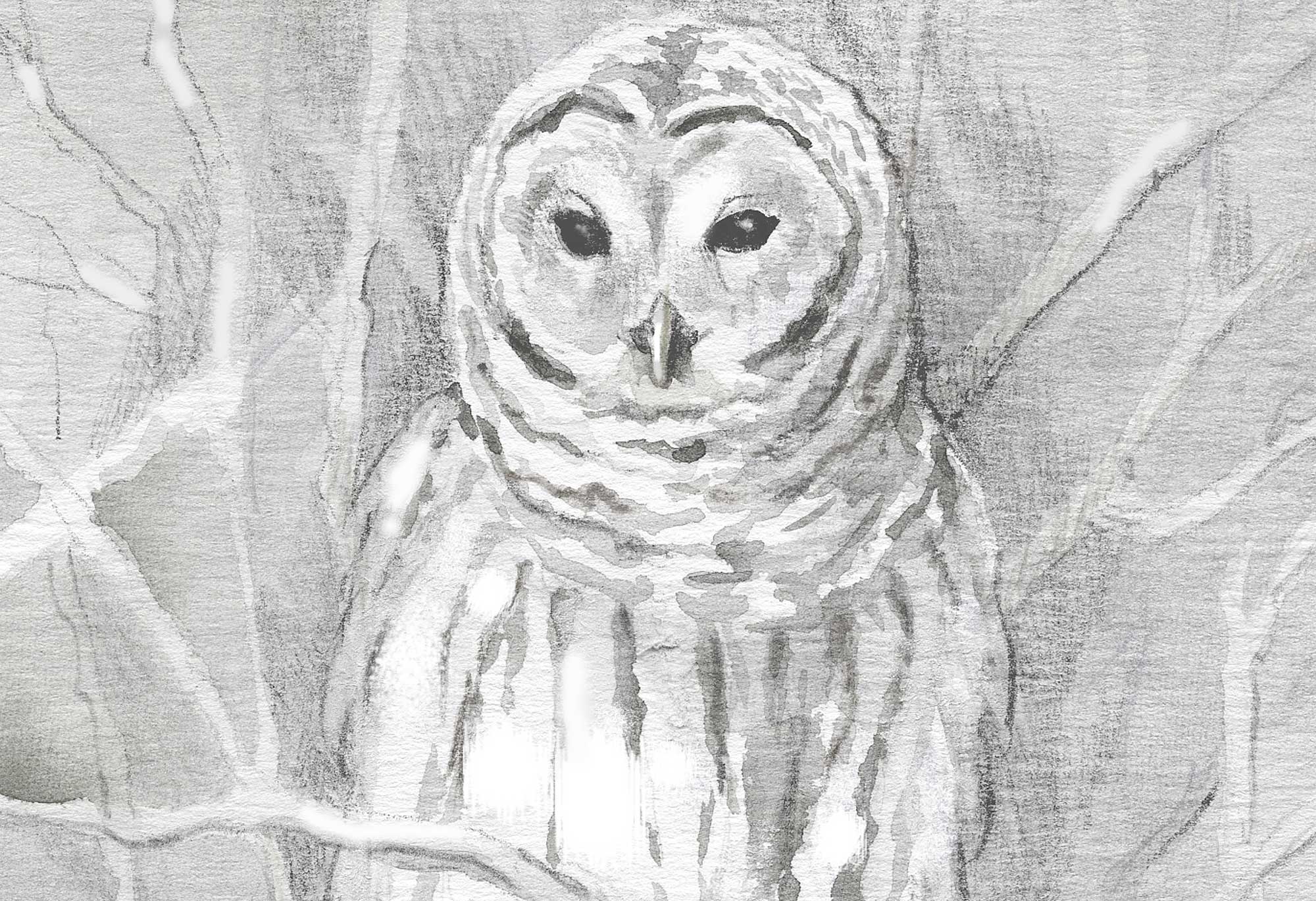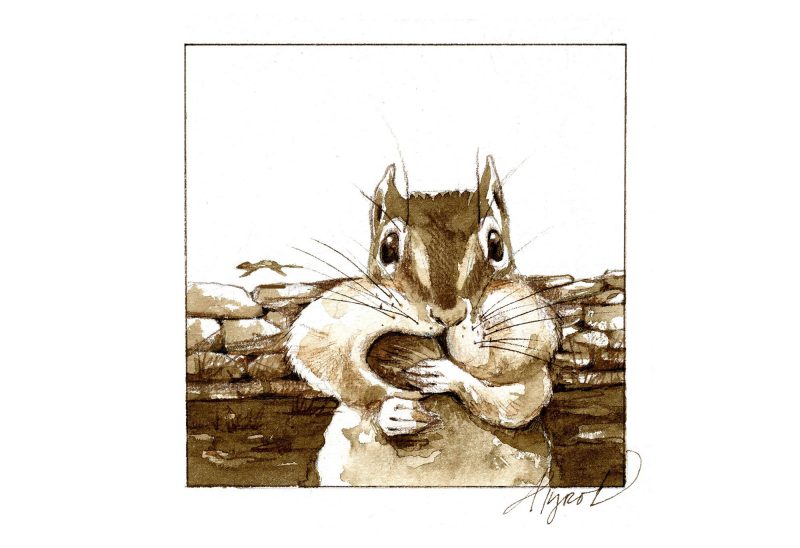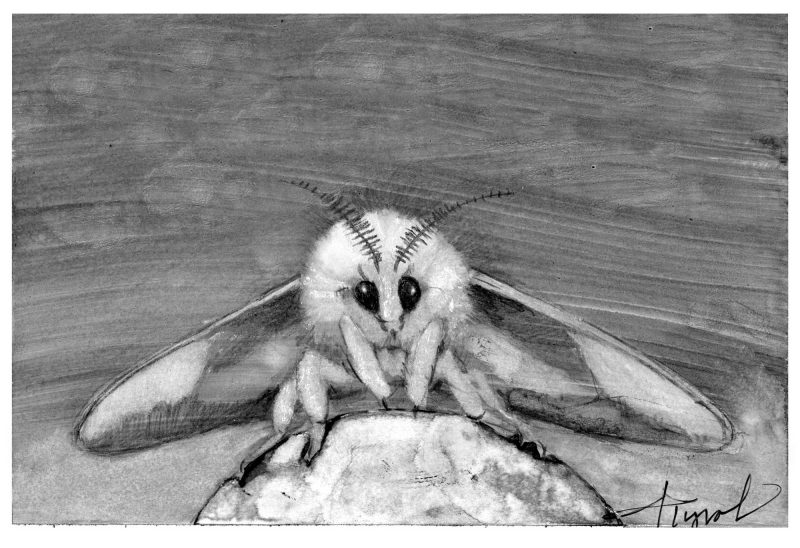By Meghan McCarthy McPhaul
For several days last winter, a barred owl perched atop a dead white birch tree in our field. As winters go, last year’s was very cold, and the owl puffed up against the stubbornly below-freezing temperatures, its streaky brown and white feathers fluffed and fluttering in the icy breeze. Occasionally the owl would move its head in a slow turn, from east to west to east again, dark eyes gazing at the field blanketed in deep snow.
The owl was most likely listening more than watching, straining to hear the scratching of tiny feet moving under the thick layer of white. Owls are remarkably skilled at finding and catching prey, but even they struggle to survive a long, cold season.
“This time of year, owls are working overtime, since it’s a lot harder to find food,” said Dave Erler, senior naturalist at the Squam Lakes Natural Science Center in Holderness, New Hampshire. “That’s why we see them during the daytime more often in winter.”
Usually nocturnal, owls have eyes designed to be highly sensitive in low light conditions. They also have excellent depth perception. This superior vision is the result of eyes that are more tube-shaped than round, with myriad light-sensitive nerve endings. The trade-off is that owls’ eyes cannot move like ours do, so they have limited peripheral vision.
To compensate, owls are designed to turn their heads up to 270 degrees. Like other raptors, they have 14 vertebrae in their necks, compared to humans’ seven cervical bones. That, combined with a specialized arrangement of blood vessels to ensure the neck rotation does not impede circulation, allows owls their incredible range of head motion.

The barred owl. Illustration by Adelaide Tyrol.
This head-turning ability helps more than vision; it also aids in hearing, perhaps the owl’s most important predatory feature. Many owls, including barred, saw-whet, and others that hunt in northern New England through the winter, have asymmetrically-placed ear openings pointing in slightly different directions. This means that sounds reach the ears at different times. If an owl hears a mouse scurrying through the snow on the left, it turns its head in that direction and then pinpoints the exact location of its prey based on how the sound reaches each ear. The feathers around an owl’s face and ears also funnel sound efficiently to the ears.
“Owls catch sounds at different angles and probably at a different rate, too. Since they’re hunting more by sound than sight, that’s really an advantage,” said Erler. “That’s what allows them to hear their prey underneath the snow.”
An owl can hear a rodent moving up to two feet below the surface of the snow. And owls are able to hear prey move even as they fly toward it, allowing them to adjust their path in flight as necessary. Basically, owls perform instantaneous trigonometry as they hunt, changing direction based on shifting prey intelligence in mere milliseconds.
This mid-flight adjustment is helped by another feature that makes owls great hunters: silent wings. Compared with other raptors, owls’ wings are broad, rounded, and quite large in relation to their body size, creating a low wing loading: more lift per wing beat. Less flapping means less sound, of course, but the intricate design of an owl’s feathers also muffles noise.
There are three sets of feathers that factor into an owl’s stealth flying. First, the feathers at the leading edge of the wing feature flexible bristles that break up the turbulence – or sound of air moving over wings – into smaller, less noisy currents. Porous fringe along the feathers at the trailing end of the wings muffle the sound of air sliding off the back side. Finally, the dense, velvety down feathers covering the owl’s body and wings absorb sound, comparable to the effect of a heavy carpet.
Once an owl has located and silently approached its prey, it attacks in a sudden, violent swoop, using its talons to break through the snow.
When the hunting is good, many owls will cache food in a tree snag or nest. When the hunting is not so good, owls turn opportunistic, for example, staking out birdfeeders in the hopes of catching squirrels, birds and other seed eaters.
According to Erler, owls aren’t particularly intelligent birds, despite their reputation for wisdom. However, as winter predators, they are remarkably well adapted. Look for one fluffed up in a tree near you, and next time you’re out in a field, keep an eye out for evidence of the hunt: wing scrapes in the snow with a hole in the middle, where the talons punched through.
This week’s Outside Story feature was written by Meghan McCarthy McPhaul, an author and freelance writer who lives in Franconia. The Outside Story is assigned and edited by Northern Woodlands magazine and sponsored by the Wellborn Ecology Fund of New Hampshire Charitable Foundation. Illustration by Adelaide Tyrol.



















